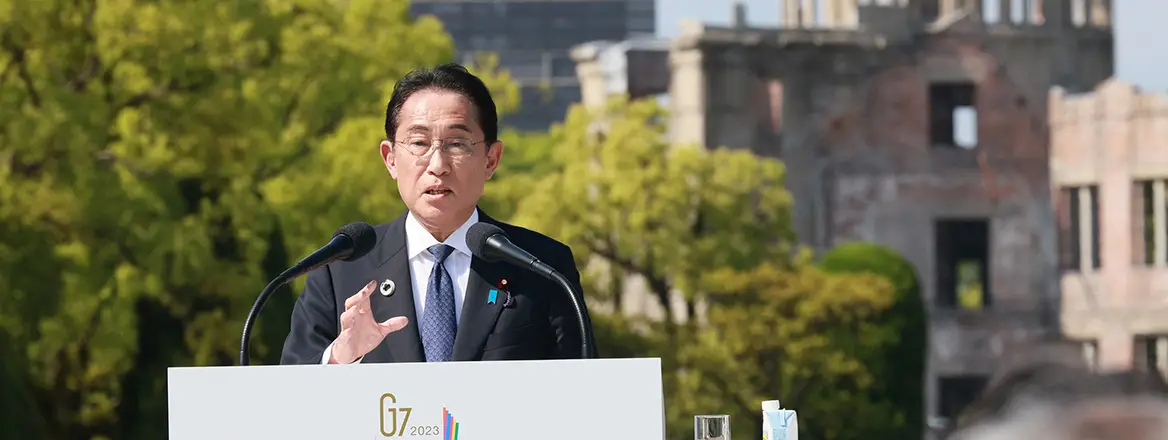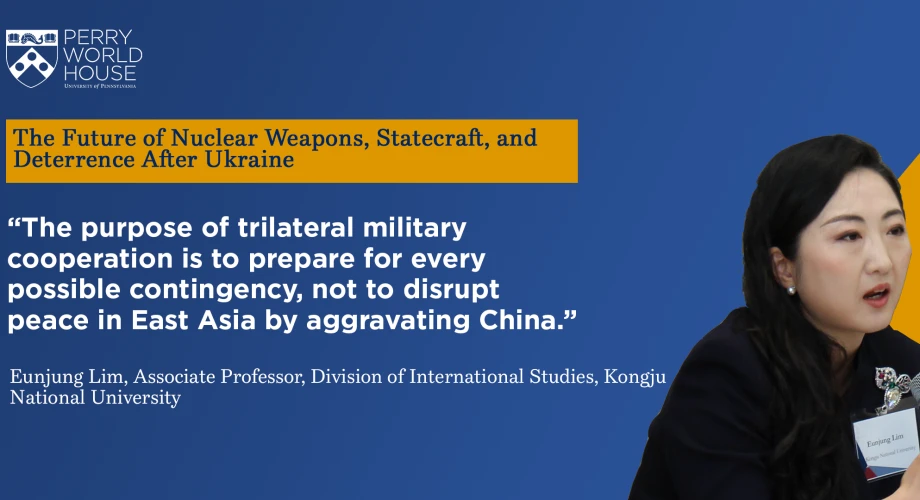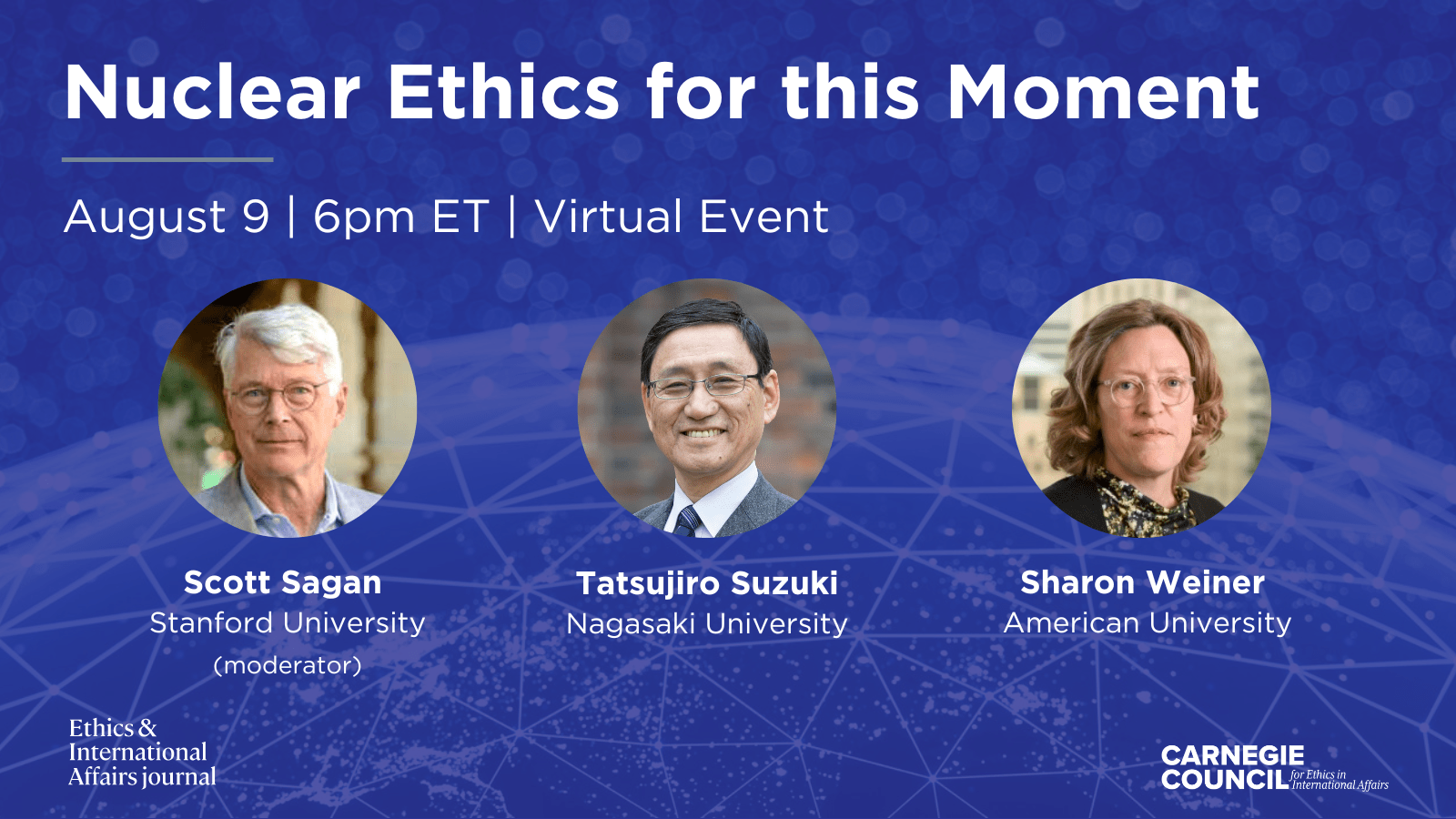Managing the Dilemma: Japan’s Nuclear Disarmament Agenda
RUSI
APLN Senior Associate Fellow Nobumasa Akiyama writes about how the Japanese Prime Minister balances his commitment to nuclear disarmament with the need to strengthen his country’s alliance with the US. The original post can be found on the RUSI website here.
The current Japanese prime minister, an ardent believer in nuclear disarmament, has managed to put the topic on the G7 agenda. But he also faces the imperative of strengthening his country’s alliance with the US.
This year’s G7 Summit hosted by Japan in May reaffirmed the commitment of G7 leaders to achieving a world free of nuclear weapons through the G7 Leaders’ Hiroshima Vision for Nuclear Disarmament (Hiroshima Vision). This marked the first time a G7 document explicitly addressed nuclear disarmament. The decision to hold the summit in the historically significant city of Hiroshima demonstrated the strong intentions of Prime Minister Fumio Kishida, who was elected from Hiroshima and has identified nuclear disarmament as his ‘life’s work’. It was only natural that nuclear disarmament would be a central focus of the summit.
However, the ‘Hiroshima Vision’ has received mixed reactions from the public. Civil society groups and organisations representing Hibakusha (A-bomb survivors) – who are ardent proponents of nuclear abolition – have expressed discontent, arguing that the vision fails to sufficiently commit to nuclear abolition and, in turn, inadvertently endorses the role of nuclear weapons. They believe that such a document does not deserve to carry the name of Hiroshima.
Almost 78 years since the atomic bombing, the Hibakusha are aging and becoming increasingly frustrated with the stalemate in nuclear disarmament. Moreover, the Treaty on the Prohibition of Nuclear Weapons, adopted in 2017, has garnered an increasing number of ratifications and entered into force in 2021. The desire for nuclear abolition is gaining momentum, particularly among civil society. Against this backdrop, expectations were understandably high that a summit held in a city that experienced the devastation of an atomic bomb would concretely address the issue of nuclear disarmament.
Meanwhile, the international security landscape is growing increasingly precarious. Russia’s invasion of Ukraine has once again underscored the significance of nuclear weapons in international security. In the course of its aggression, Russia has continued to send nuclear signals, both explicitly and implicitly. The international community has recognised the credibility of Russia’s threats of nuclear use, and the risk of nuclear use is now deemed to be at its highest since the Cuban Missile Crisis. In addition, China refuses to disclose information on its nuclear arsenal or its development, and is believed to be rapidly building up its nuclear capability. It is not easy to engage in substantive discussion on nuclear disarmament under these circumstances.
Debate over outcomes on nuclear disarmament from the G7 meeting in Hiroshima has brought to light Japan’s ‘nuclear dilemma’. This dilemma revolves around the delicate balance between advocating for nuclear disarmament and the necessity of maintaining reliance on extended nuclear deterrence in a highly complex security environment. Since the decision to hold the G7 meeting in Hiroshima was made prior to Russia’s invasion in Ukraine, many might have perceived Kishida as being unfortunate in his timing.
How has Kishida managed this difficult task in the context of the G7? It is unrealistic to expect that a single G7 document would unravel the complex interests and concerns over security and the goal of a world without nuclear weapons. How does the ‘Hiroshima Vision’ approach the difficult task of achieving this goal? The key word is ‘responsibility’. As Kishida stated at the summit press conference, political leaders have two responsibilities in the current international environment: the responsibility for the security of their own country and the responsibility to realise the ideal of a world without nuclear weapons.
The ‘Hiroshima Vision’ seeks to maintain the foundations of an international disarmament regime that seems as if it could collapse at any moment.
Meeting national security responsibilities in the face of nuclear threats and intimidation is challenging to envision without considering the role of nuclear deterrence. The document acknowledges that nuclear weapons, ‘for as long as they exist, should serve defensive purposes, deter aggression, and prevent war and aggression’. This is an aspect where the G7 document was severely criticized by A-bomb survivors and civil society, as it justified G7 countries’ own nuclear policy/deterrence while condemning Russia’s nuclear coercion.
Another measure contributing to national security is risk/crisis management. Prior notification of strategic activities by nuclear weapons states would contribute to preventing unwanted escalation based on contingencies and misunderstandings, and help to avert crises in situations where strategic dialogue among the major powers has been disrupted.
However, this does not mean giving up on the responsibility to realise the ideal of a world without nuclear weapons.
One of the core concepts of the ‘Hiroshima Vision’ is to reiterate and reinforce the established norm of non-use of nuclear weapons, which has been developed over the course of the past eight decades. This is indicative of the challenging nature of the current nuclear disarmament landscape – in other words, it recognises that the world is now in a crisis in which this norm may no longer be sustainable. Hence, it makes clear that threats of the use of nuclear weapons by Russia, or any use of nuclear weapons, will not be tolerated. It also affirms the joint statement by the UN Security Council permanent members in January 2022, to which Russia and China are committed, that ‘a nuclear war cannot be won and must never be fought’.
The document also endorses norms against nuclear testing that could lead to further proliferation and build-up, and puts forward measures to improve transparency, including a moratorium on the production of fissile materials and requesting reporting to the IAEA on the status of civilian plutonium management. These measures, while not naming any country specifically, address the issues around China’s lack of transparency.
The ‘Hiroshima Vision’ seeks to maintain the foundations of an international disarmament regime that seems as if it could collapse at any moment. It stresses the need to uphold the Nuclear Non-Proliferation Treaty (NPT) as the cornerstone of the international non-proliferation regime, and calls on Russia to return to the implementation of the New START Treaty. In addition, it is important to note that the document mentions new proposals to engage various stakeholders through the NPT. All of these measures see transparency as the foundation for promoting disarmament. For example, briefings for non-nuclear weapons states and civil society on national reports regarding nuclear weapons states’ nuclear policies, and a dialogue with non-nuclear weapons states on limiting nuclear forces and the nuclear arms race were proposed.
The sight of Zelensky and Kishida placing flowers at the memorial to the victims of the atomic bombing was a strong reminder of the injustice of Russia’s nuclear threats.
However, the nuclear disarmament efforts at the G7 Hiroshima Summit should not be evaluated solely in terms of the ‘Hiroshima Vision’ document. What was even more important than the document was the fact that the leaders of the G7 states and the invited countries actually stood in Hiroshima and witnessed the reality of the atomic bombing and its aftermath. We are not so naïve as to believe that the Hiroshima experience will immediately move our leaders. However, judging by the messages written by the G7 leaders at the museum, they seemed to be deeply moved as individuals by the tragic events that unfolded there. This emotional connection seemingly played a significant role in fostering their resolve as leaders to strive for the goal of a world without nuclear weapons. This was the very reason for holding the G7 meeting in Hiroshima, was it not? Kishida has long recommended that young people and world leaders visit Hiroshima to experience the reality of the use of nuclear weapons.
Not to be forgotten when evaluating what Kishida has achieved in the area of security are the various bilateral and multilateral meetings held on the margins of the G7 summit.
The presence of Ukrainian President Volodymyr Zelensky at Hiroshima came as a surprise to many. Zelensky visited the Peace Memorial Park and compared the devastation of Hiroshima immediately after the bombing to the destruction of Ukrainian cities, reiterating that Ukraine’s desire is peace, but that he will not allow Russia to turn Ukraine into a ‘Stone of Human Shadow’. (This is the name of one of the exhibits in the museum. It is a stone step on which only the shadow of a person remains. The shadow was cast by the person who was seated on the stone steps in front of a bank at the time when the atomic bomb was dropped. It is the only trace that remains, while the person has vanished, leaving an eerie void in their place.) The sight of Zelensky and Kishida placing flowers at the memorial to the victims of the atomic bombing was a strong reminder of the injustice of Russia’s nuclear threats and the significance of pursuing an international order based on the rule of law, humanity and justice.
Furthermore, efforts to strengthen alliances and security cooperation are also worthy of note. The Japan–US summit reaffirmed the current efforts towards strengthening the two countries’ alliance and maintaining the credibility of extended nuclear deterrence. Also, for the first time, the leaders of Japan and South Korea jointly visited the Cenotaph for Korean A-bomb Survivors in the Peace Memorial Park. (This was also the first time that a South Korean president has visited the cenotaph.) Strengthening the relationship of trust between the leaders of Japan and South Korea will contribute to the promotion of deeper security cooperation between the two countries, which will be indispensable in dealing with the challenging security environment in East Asia. In addition, Japan and the UK agreed to the Hiroshima Accord: an Enhanced UK-Japan Global Strategic Partnership, which elaborates on their strengthening and deepening cooperation in the areas of defence, trade and investment, and science and technology, as well as on global issues like climate change.
In Hiroshima, Kishida successfully conducted diplomacy to manage Japan’s nuclear dilemma, to uphold ‘a world without nuclear weapons’ as a universal goal for the international community, and to deepen alliances and security cooperation, which are indispensable in the current international environment. However, the real test for Kishida will be how he delivers on these commitments and agreements.




